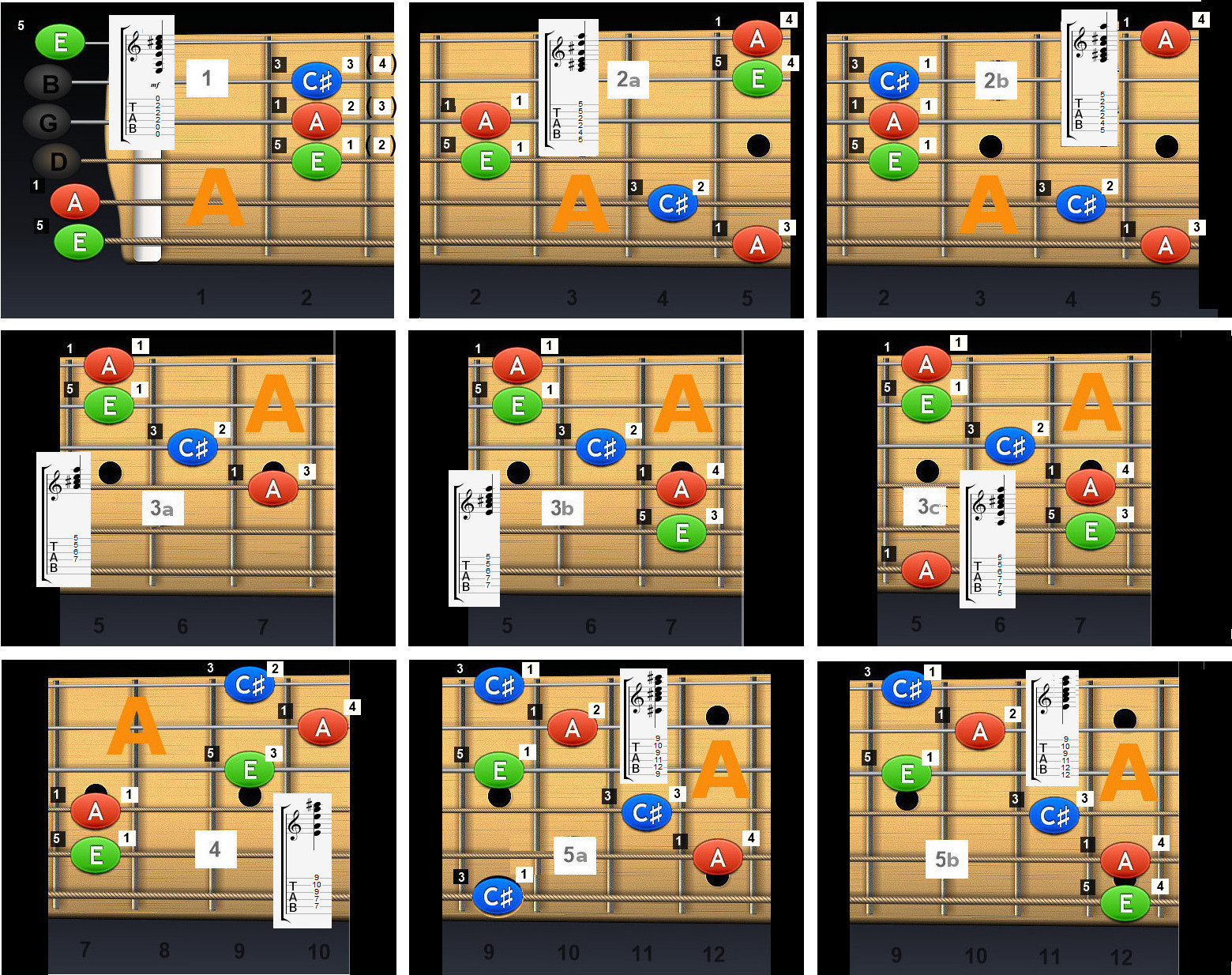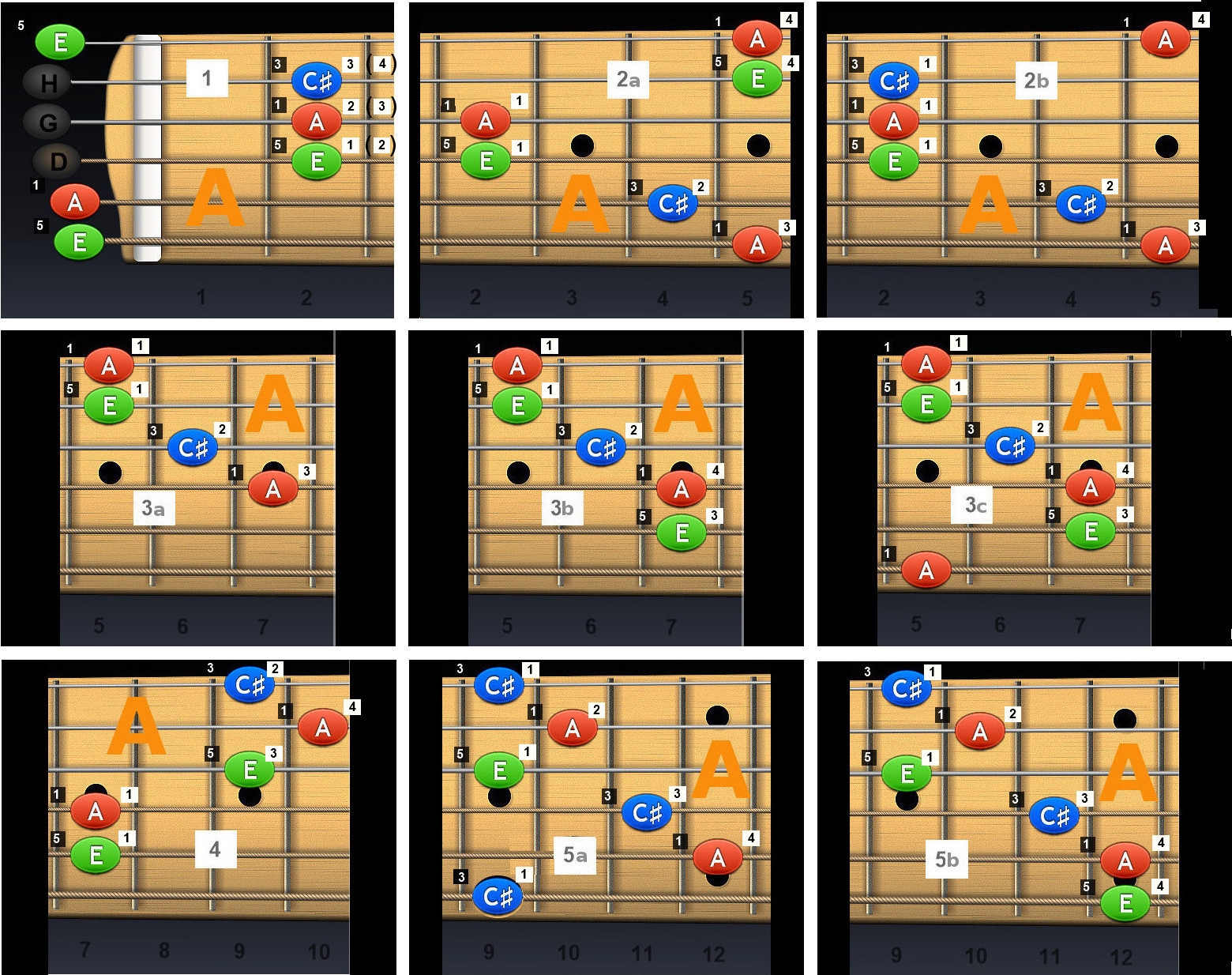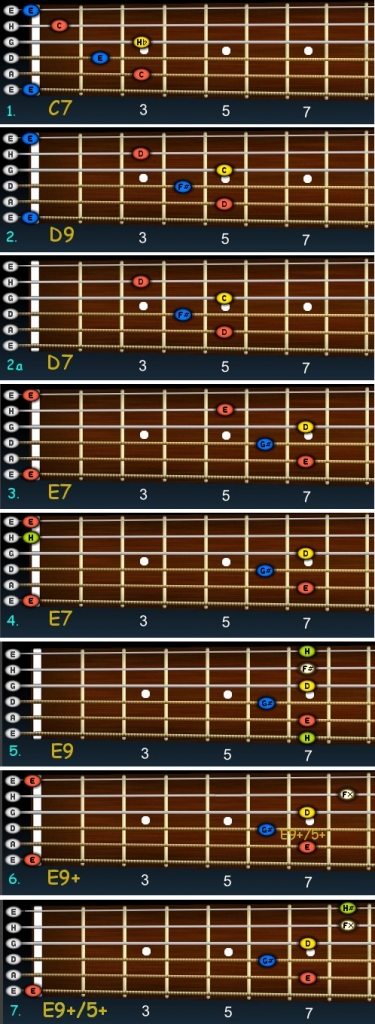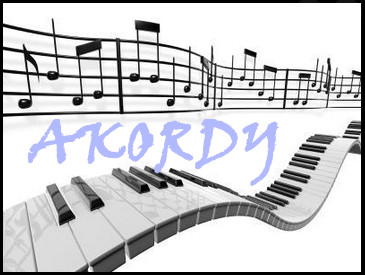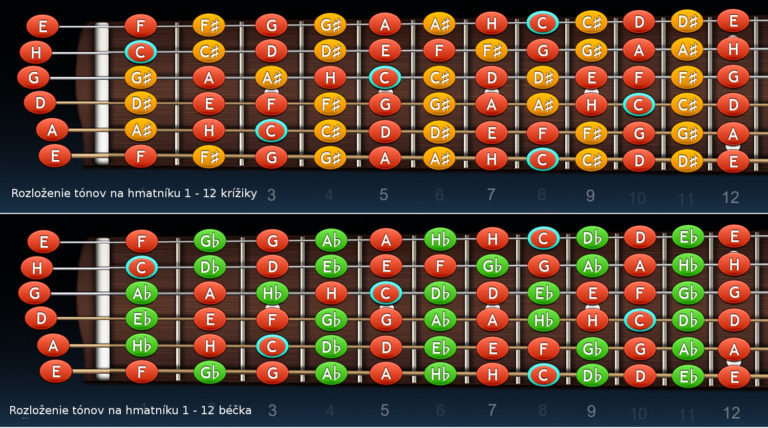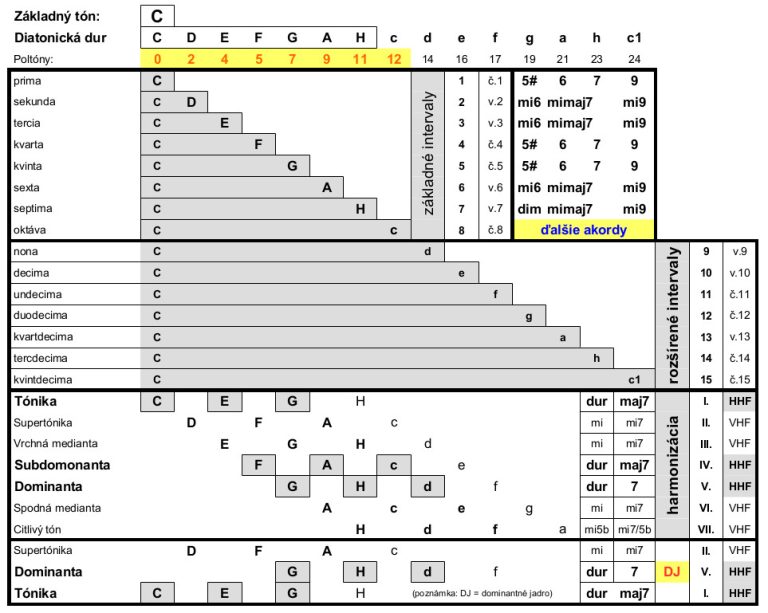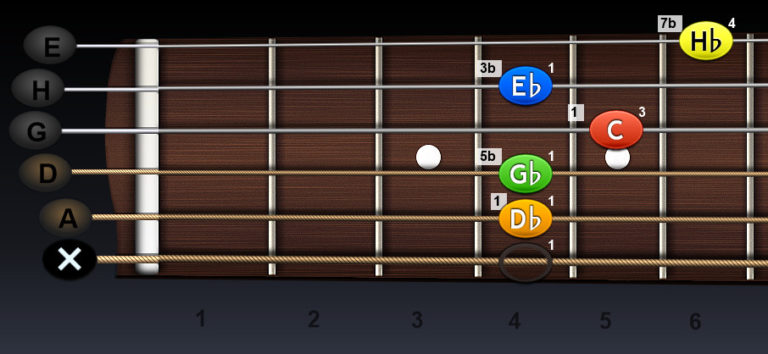Akord A dur – orientácia na hmatníku
Fingerboard orientation – chord A major
orientación del diapasón – acorde A mayor
stredoeurópske značenie / contrassegni dell’Europa centrale /Central European markings
(Las marcas angloamericanas se encuentran a continuación en el artículo)
(Anglo-American markings are below in the article)

Notový zápis a TAB k akordom v zvýraznenom poli zodpovedajú noty a TAB na pravej strane hmatníka. Niekde sa vyskytuje aj viacej možností. Tieto schémy môžete využiť aj pri cvičení arppegio. Ľavý horný index = označenie intervalu.
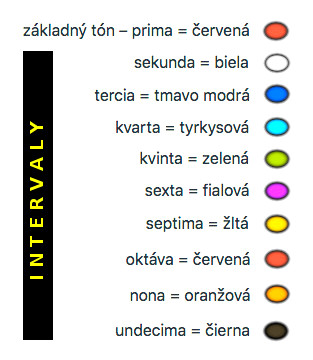

Rozbor k akordom na obrázku nižšie:
Ľavý horný index = označenie intervalu * Pravý horný index = doporučený prstoklad
1 / Ide o základný (otvorený) hmat A dur, kde sa využíva vyznenie prázdnych strún E, A, e. Číslice pravého indexu v zátvorkách označujú alternatívne použitie prstov.
2a/ Náročný hmat, kde je potrebné malíčkom pritlačiť melodické struny „H“ a „e“ a takmer nepoužívaný.
2b/ Obdoba hmatnu 2a. Je to síce náročný a menej používaný hmat, ale ľahšie zvládnuteľný ako „2a“ a hráva sa hlavne vo vyšších polohách, alebo s použitím capodasteru.
3a/ Hmat s použitím malého barré na strunách „H“ a „e“ (1 = ukazovák). Na strunách E a A sa nehrá.
3b/ Obdoba hmatu 3a ale hrá sa na 5 strunách okrem struny „E“.
3c/ Ide o veľký barré hmat (ukazovák hrá cez všetky struny ale pritláčať stačí na strunách E, A, e). Pri použití capodastera v 5 pozícii je tento hmat možné hrať aj ako základný hmat E dur.
4/ Ukazovák hrá malé barré na strunách A, D a ostatné struny hrajú akoby základný hmat D dur.
5a/ Ukazovák hrá veľké barré a ostatné struny hrajú akoby základný hmat C dur.
5b/ Obdoba hmatu 5a ale je náročnejší, lebo malíčkom je treba pritlačiť struny E, A, obdoba základného hmatu C dur.
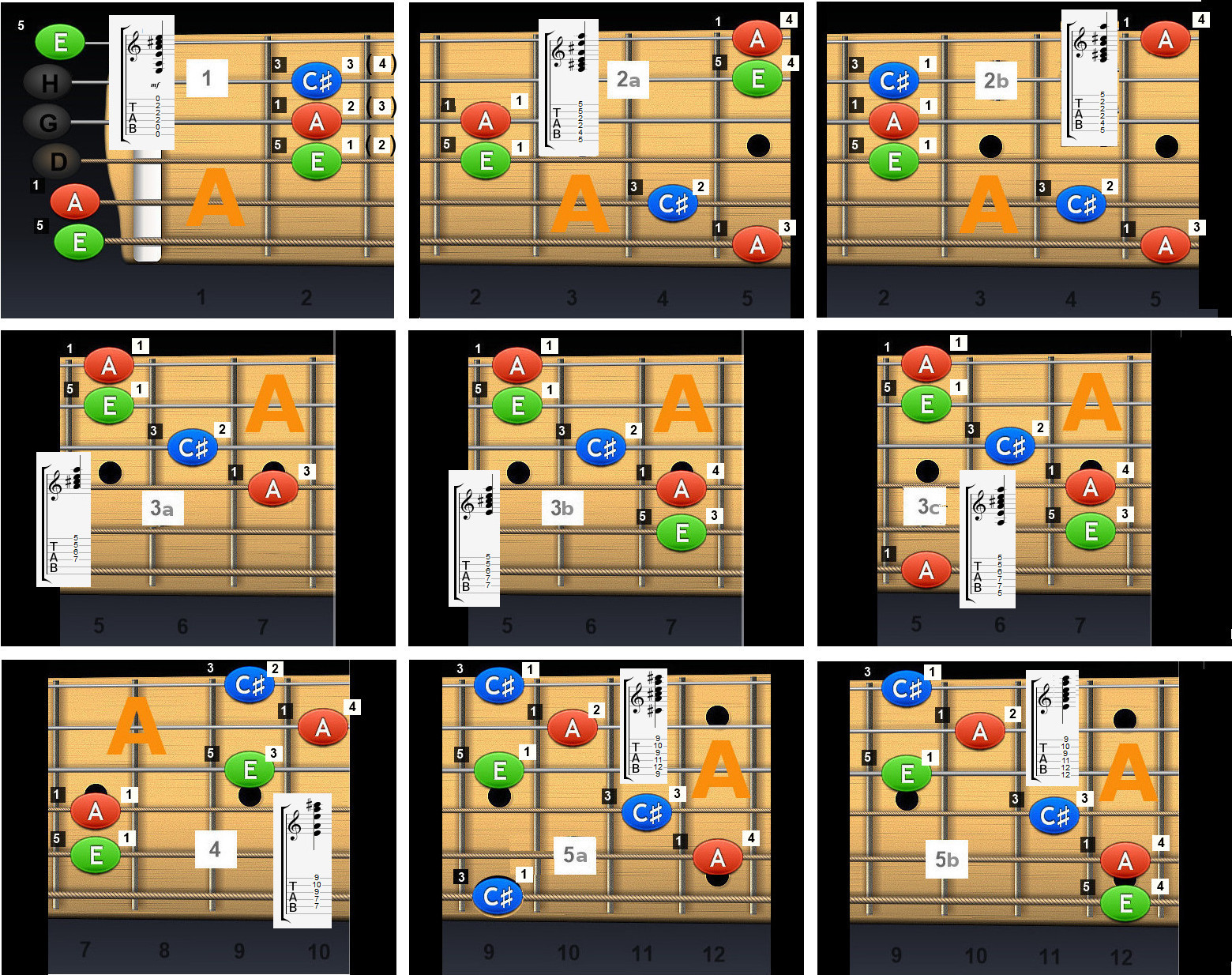
*
anglo-americké značenie /Contrassegni anglo-americani /Anglo-American markings
The notation and TAB for the chords in the highlighted field correspond to the notes and TAB on the right side of the fingerboard. Somewhere there are more options. You can also use these schemes when practicing arppeggio. Left superscript = interval designation.
La notación y TAB para los acordes en el campo resaltado corresponden a las notas y TAB en el lado derecho del diapasón. En algún lugar hay más opciones. También puede utilizar estos esquemas cuando practique el arpegio. Superíndice izquierdo = designación de intervalo.

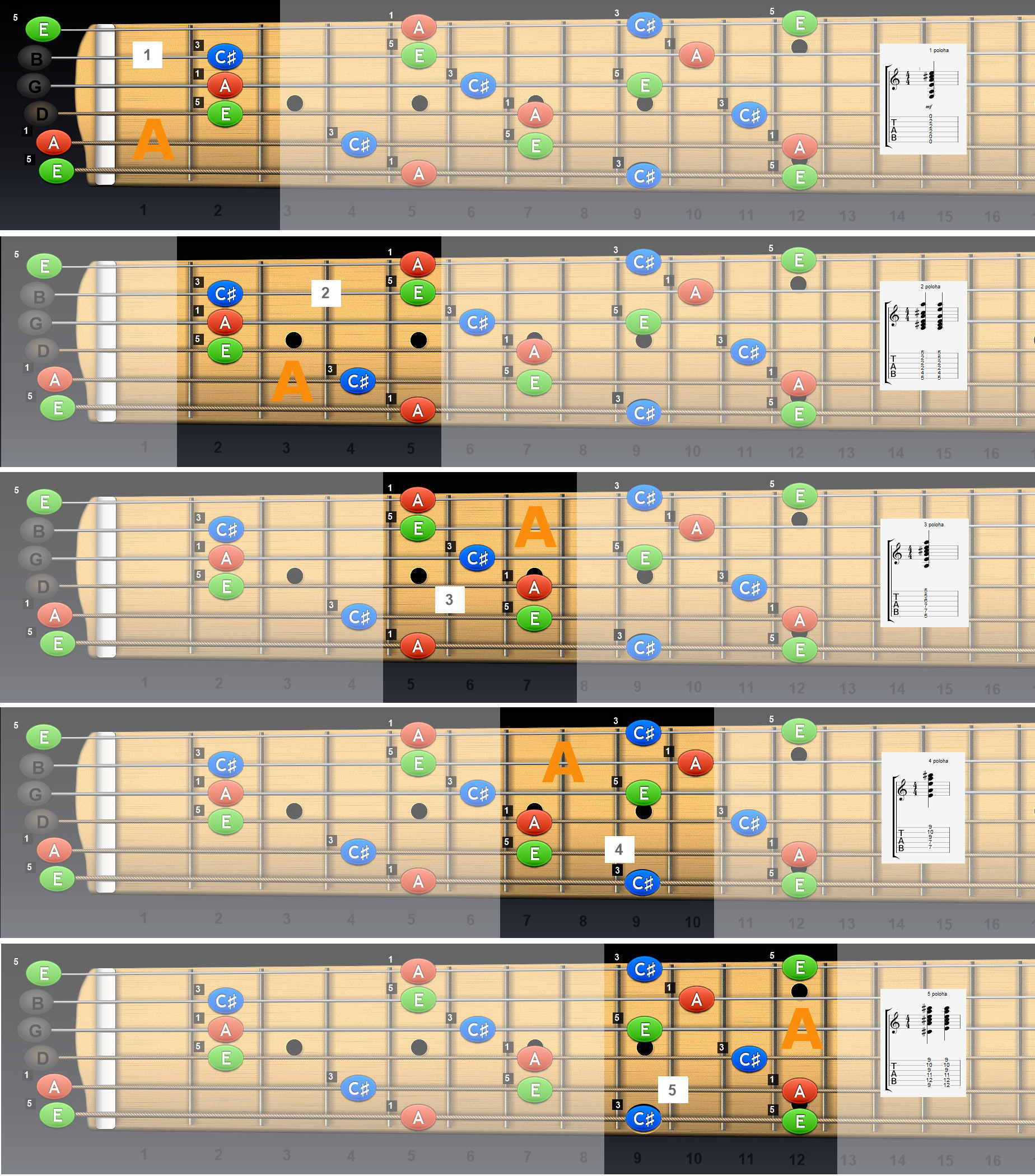
Analysis of the chords in the image below:
Left superscript = interval designation * Right superscript = recommended fingering
Análisis de los acordes en la siguiente imagen:
Superíndice izquierdo = designación del intervalo * Superíndice derecho = digitación recomendada
1 / It is a basic (open) touch of A major, where the tone of the empty strings E, A, e is used. Right index numbers in parentheses indicate alternative finger uses.
2a/ Difficult touch, where it is necessary to press the melodic strings „B“ and „e“ with the little finger and hardly used.
2b/ Similarity of touch 2a. Although it is a demanding and less used touch, it is easier to master than „2a“ and is mainly played in higher positions or with the use of a capodaster.
3a/ Touch using a small barre on the „B“ and „e“ strings (1 = index finger). The E and A strings are not played.
3b/ Similar feel to 3a but played on 5 strings except the „E“ string.
3c/ This is a big barre touch (the index finger plays over all the strings, but it is enough to press down on the E, A, e strings). When using the capodaster in the 5th position, this key can also be played as the basic key of E major.
4/ The index finger plays a small barre on the A, D strings, and the other strings play as if the basic touch of D major.
5a/ The index finger plays a big barre and the other strings play as if the basic touch of C major.
5b/ Similar to the touch of 5a, but it is more demanding, because you have to press the E, A strings with the little finger, similar to the basic touch of C major.
